Anthony Martone
Changepoint Detection for Real-Time Spectrum Sharing Radar
Jun 30, 2022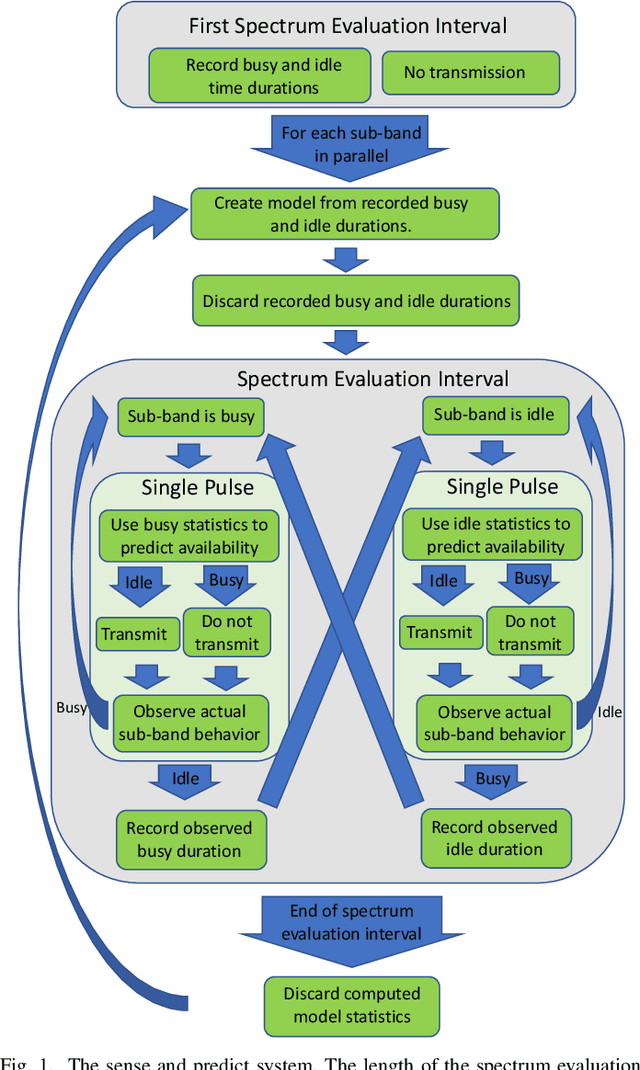
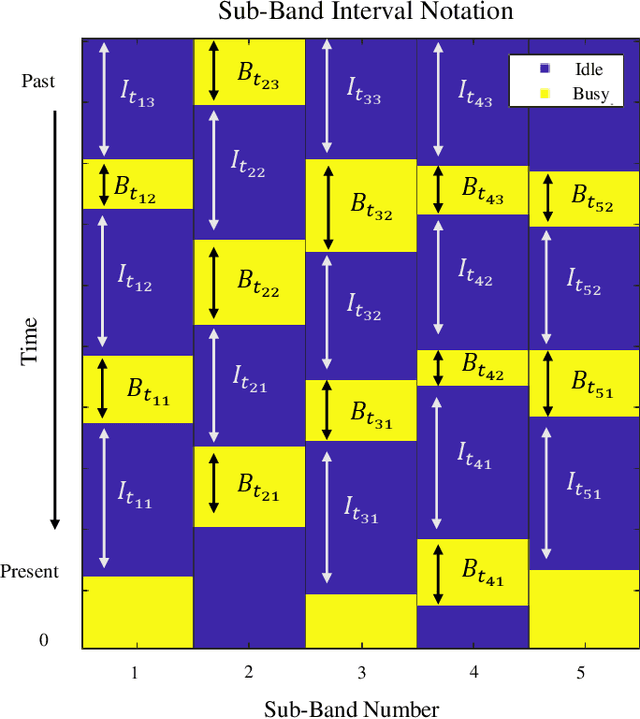
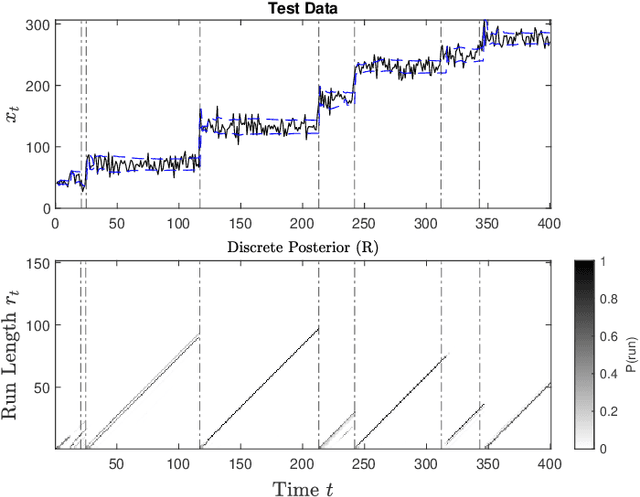
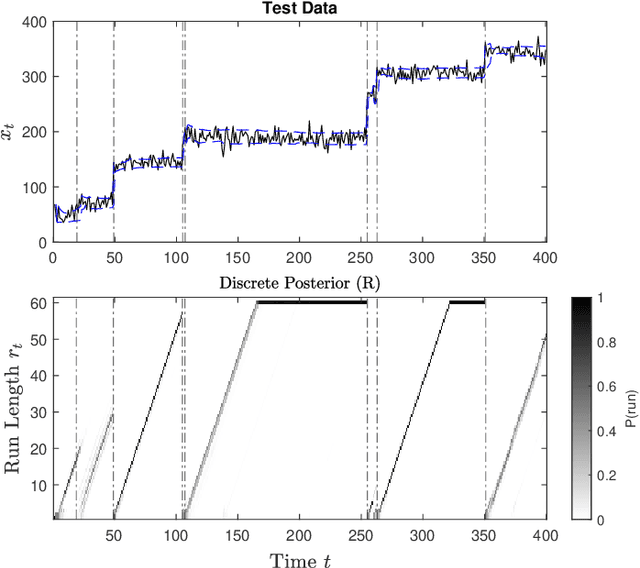
Abstract:Radar must adapt to changing environments, and we propose changepoint detection as a method to do so. In the world of increasingly congested radio frequencies, radars must adapt to avoid interference. Many radar systems employ the prediction action cycle to proactively determine transmission mode while spectrum sharing. This method constructs and implements a model of the environment to predict unused frequencies, and then transmits in this predicted availability. For these selection strategies, performance is directly reliant on the quality of the underlying environmental models. In order to keep up with a changing environment, these models can employ changepoint detection. Changepoint detection is the identification of sudden changes, or changepoints, in the distribution from which data is drawn. This information allows the models to discard "garbage" data from a previous distribution, which has no relation to the current state of the environment. In this work, bayesian online changepoint detection (BOCD) is applied to the sense and predict algorithm to increase the accuracy of its models and improve its performance. In the context of spectrum sharing, these changepoints represent interferers leaving and entering the spectral environment. The addition of changepoint detection allows for dynamic and robust spectrum sharing even as interference patterns change dramatically. BOCD is especially advantageous because it enables online changepoint detection, allowing models to be updated continuously as data are collected. This strategy can also be applied to many other predictive algorithms that create models in a changing environment.
Distributed Online Learning for Coexistence in Cognitive Radar Networks
Mar 11, 2022



Abstract:This work addresses the coexistence problem for radar networks. Specifically, we model a network of cooperative, independent, and non-communicating radar nodes which must share resources within the network as well as with non-cooperative nearby emitters. We approach this problem using online Machine Learning (ML) techniques. Online learning approaches are specifically preferred due to the fact that each radar node has no prior knowledge of the environment nor of the positions of the other radar nodes, and due to the sequential nature of the problem. For this task we specifically select the multi-player multi-armed bandit (MMAB) model, which poses the problem as a sequential game, where each radar node in a network makes independent selections of center frequency and waveform with the same goal of improving tracking performance for the network as a whole. For accurate tracking, each radar node communicates observations to a fusion center on set intervals. The fusion center has knowledge of the radar node placement, but cannot communicate to the individual nodes fast enough for waveform control. Every radar node in the network must learn the behavior of the environment, which includes rewards, interferer behavior, and target behavior. Our contributions include a mathematical description of the MMAB framework adapted to the radar network scenario. We conclude with a simulation study of several different network configurations. Experimental results show that iterative, online learning using MMAB outperforms the more traditional sense-and-avoid (SAA) and fixed-allocation approaches.
Adversarial Multi-Player Bandits for Cognitive Radar Networks
Oct 22, 2021



Abstract:We model a radar network as an adversarial bandit problem, where the environment pre-selects reward sequences for each of several actions available to the network. This excludes environments which vary rewards in response to the learner's actions. Adversarial environments include those with third party emitters which enter and exit the environment according to some criteria which does not depend on the radar network. The network consists of several independent radar nodes, which attempt to attain the highest possible SINR in each of many time steps. We show that in such an environment, simple sub-band selection algorithms are unable to consistently attain high SINR. However, through the use of adversarial multi-player bandit algorithms, a radar network can continue to track targets without a loss in tracking precision.
Open-set Classification of Common Waveforms Using A Deep Feed-forward Network and Binary Isolation Forest Models
Oct 01, 2021



Abstract:In this paper, we examine the use of a deep multi-layer perceptron architecture to classify received signals as one of seven common waveforms, single carrier (SC), single-carrier frequency division multiple access (SC-FDMA), orthogonal frequency division multiplexing (OFDM), linear frequency modulation (LFM), amplitude modulation (AM), frequency modulation (FM), and phase-coded pulse modulation used in communication and radar networks. Synchronization of the signals is not needed as we assume there is an unknown and uncompensated time and frequency offset. The classifier is open-set meaning it assumes unknown waveforms may appear. Isolation forest (IF) models acting as binary classifiers are used for each known signal class to perform detection of possible unknown signals. This is accomplished using the 32-length feature vector from a dense layer as input to the IF models. The classifier and IF models work together to monitor the spectrum and identify waveforms along with detecting unknown waveforms. Results showed the classifier had 100% classification rate above 0 dB with an accuracy of 83.2% and 94.7% at -10 dB and -5 dB, respectively, with signal impairments present. Results for the IF models showed an overall accuracy of 98% when detecting known and unknown signals with signal impairments present. IF models were able to reject all unknown signals while signals similar to known signals were able to pass through 2% of the time due to the contamination rate used during training. Overall, the entire system can classify correctly in an open-set mode with 98% accuracy at SNR greater than 0 dB.
Classification of Common Waveforms Including a Watchdog for Unknown Signals
Aug 16, 2021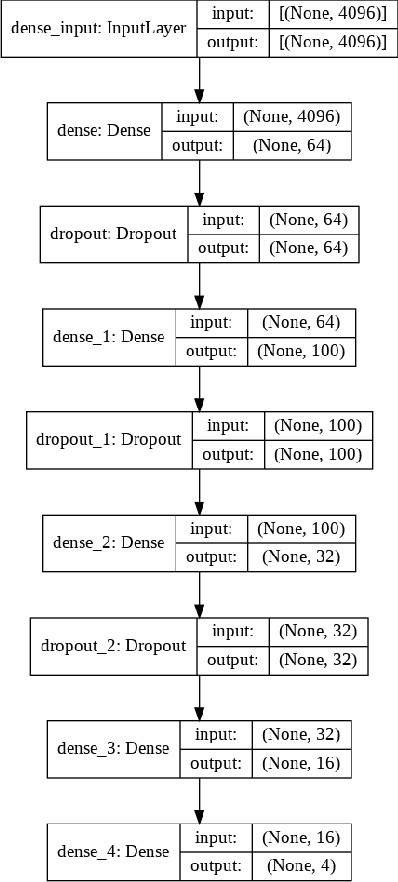
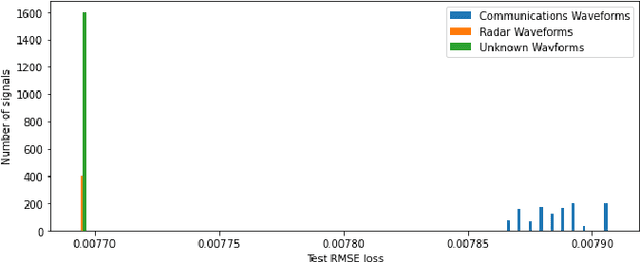
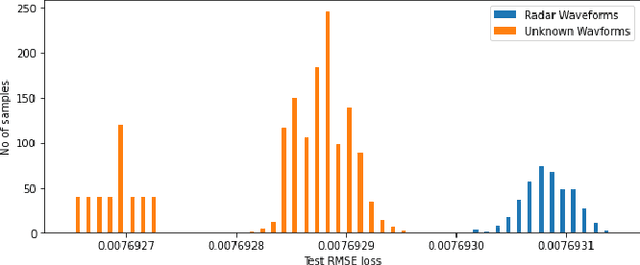
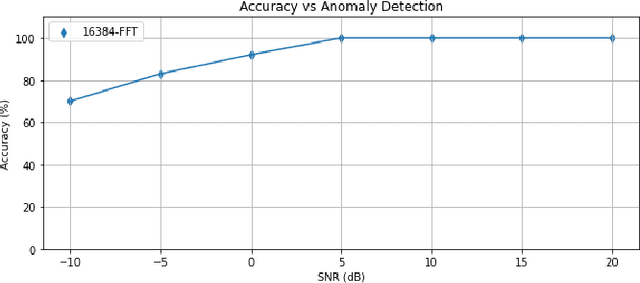
Abstract:In this paper, we examine the use of a deep multi-layer perceptron model architecture to classify received signal samples as coming from one of four common waveforms, Single Carrier (SC), Single-Carrier Frequency Division Multiple Access (SC-FDMA), Orthogonal Frequency Division Multiplexing (OFDM), and Linear Frequency Modulation (LFM), used in communication and radar networks. Synchronization of the signals is not needed as we assume there is an unknown and uncompensated time and frequency offset. An autoencoder with a deep CNN architecture is also examined to create a new fifth classification category of an unknown waveform type. This is accomplished by calculating a minimum and maximum threshold values from the root mean square error (RMSE) of the radar and communication waveforms. The classifier and autoencoder work together to monitor a spectrum area to identify the common waveforms inside the area of operation along with detecting unknown waveforms. Results from testing showed the classifier had 100\% classification rate above 0 dB with accuracy of 83.2\% and 94.7\% at -10 dB and -5 dB, respectively, with signal impairments present. Results for the anomaly detector showed 85.3\% accuracy at 0 dB with 100\% at SNR greater than 0 dB with signal impairments present when using a high-value Fast Fourier Transform (FFT) size. Accurate detection rates decline as additional noise is introduced to the signals, with 78.1\% at -5 dB and 56.5\% at -10 dB. However, these low rates seen can be potentially mitigated by using even higher FFT sizes also shown in our results.
 Add to Chrome
Add to Chrome Add to Firefox
Add to Firefox Add to Edge
Add to Edge